Alcohol and Drug Rehab Centers in Cut Bank, Montana
Cut Bank, MT has several nearby treatment choices including: 3 medicaid treatment centers, 1 inpatient rehab, 2 drug rehabs that take PPO insurance like Cigna, 0 drug detox, 4 outpatient treatment programs.
Get Help - Find a Rehab Center Today
Popular Searches for Drug and Alcohol Rehab in Cut Bank, Montana:
Skip To Rehab Listing
However, for individuals struggling with drug and alcohol abuse problems, Cut Bank can also offer resources in the form of 25 addiction treatment centers intended to support patients in their recoveries.
Alcohol and Drug Rehab Methods and Settings
Cut Bank area residents who struggle with addiction have many treatment settings available to them, such as the following: long term rehab facilities, inpatient treatment programs, outpatient detox programs, outpatient substance abuse counseling, short term drug and alcohol rehabs.
These rehab programs make substance abuse treatment easy to obtain, with convenient locations and numerous varying treatment modalities from which to choose, including those listed here: matrix model, group therapy, individual psychotherapy, contingency management/motivational incentive, behavior modification, brief intervention approach.
Special Programs for Addiction Treatment
Alcohol and drug addiction impacts every individual differently. In order to accommodate these differences and offer more tailored treatment, alcohol and drug treatment programs in Cut Bank offer a number of special programs for [patients such as: active duty military, residential beds for client's children, legal advocacy, clients with HIV/AIDS, housing services, aftercare/continuing care.
Patients who feel they may benefit from these customized services can discuss them with the treatment facility in order to receive help that is designed to increase the likelihood of lasting recovery.
Treatment Payment Alternatives
Residents of Cut Bank come from diverse financial situations, making it necessary for rehabilitation programs to offer various payment options that place rehabilitation within financial reach. Clients can expect to get financing alternatives at nearby drug and alcohol rehab facilities including the following: private pay, private medical insurance, medicare, medicaid, military insurance, state corrections or juvenile justice funds, state welfare or child and family services funds.
Despite a patient's financial status, payment should not be an obstacle to recovery. Drug and alcohol treatment facilities guide people through their payment alternatives and help them pinpoint a way to afford their rehab.
The result of multiple treatment programs, approaches, programs, and payment options is that treatment for alcohol and drug addiction is possible for as many people who need it.
Dr. Gina M Jansheski, M.D.
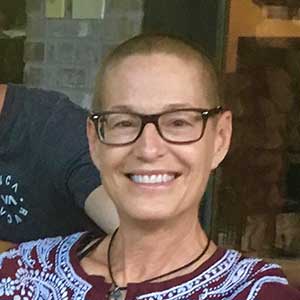
Dr. Po-Chang Hsu, M.D., M.S.

Renee Warmbrodt, RN, MSN, CPNP-PC
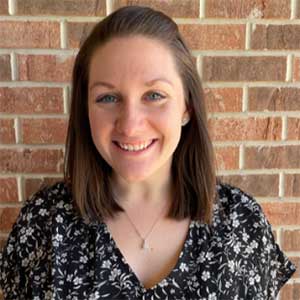
Substance Abuse Treatment Facilities Serving the Cut Bank, Montana Area:
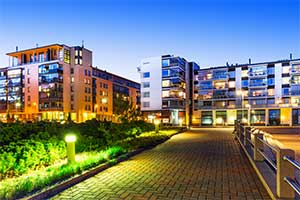 615 West Main Street
615 West Main Street
Cut Bank, MT. 59427
877-522-1275
Ideal Option has long been dedicated to helping individuals recovery after a period of substance abuse. It has been doing this within Cut Bank and in the surrounding communities for quite some time. Ideal Option provides services like matrix model, group therapy, individual psychotherapy, contingency management/motivational incentive, behavior modification, brief intervention approach - all of which represent their treatment philosophy. Ideal Option believes that clients need unique and individualized treatment approaches to achieve lasting recovery. This is why it offers various programs, like active duty military, residential beds for client's children, legal advocacy, clients with HIV/AIDS, housing services, aftercare/continuing care - among other services listed in the following sections.
Ideal Option offers long term rehabs, inpatient drug and alcohol rehabs, inpatient detox centers, outpatient counseling, short term drug treatment and others. Further, Ideal Option has relapse prevention programs that are useful in helping clients after they check out of rehab. This addiction treatment center also uses treatment types that can help you achieve lasting sobriety.
Finally, Ideal Option accepts private pay, private insurance, medicaid, medicare, military insurance, state corrections or juvenile justice funds, state welfare or child and family services funds, as well as others.
Crystal Creek Lodge Treatment Ctr Blackfeet Indian Reservation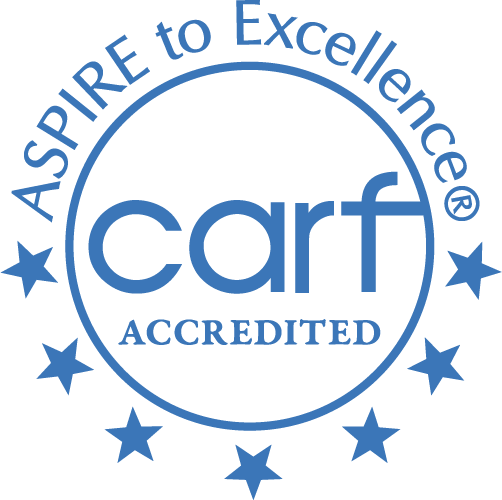

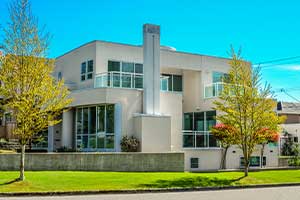 807 North Piegan Street
807 North Piegan Street
Browning, MT. 59417
406-338-6330
Crystal Creek Lodge Treatment Ctr is 20.2 miles from Cut Bank, Montana
Crystal Creek Lodge Treatment Ctr has long been dedicated to assisting its clients recovery after a period of abusing drugs and alcohol. It has been doing this within Cut Bank, Montana and in the surrounding communities for quite some time. Today, Crystal Creek Lodge Treatment Ctr provides services like matrix model, group therapy, individual psychotherapy, contingency management/motivational incentive, behavior modification, brief intervention approach - which are all representative of their rehabilitation and treatment philosophies. Crystal Creek Lodge Treatment Ctr believes that clients need individual focus and treatment for them to find full recovery treatment. This is why it provides various programs, like active duty military, residential beds for client's children, legal advocacy, clients with HIV/AIDS, housing services, aftercare/continuing care - among other services listed in the following sections.
Crystal Creek Lodge Treatment Ctr offers long term drug and alcohol rehab centers, inpatient drug abuse treatment, detoxification facilities, outpatient counseling, short term rehab centers and others. Crystal Creek Lodge Treatment Ctr has relapse prevention programs that are designed to help clients maintain their sobriety. This substance abuse treatment center also uses treatment types that can help you create both lasting and permanent stability.
Finally, Crystal Creek Lodge Treatment Ctr accepts cash or self-payment, private insurance, medicare, medicaid, military insurance, state corrections or juvenile justice funds, state welfare or child and family services funds, as well as others.
Living Alternative Choices LAC LLC
 529 Park Avenue
529 Park Avenue
Shelby, MT. 59474
208-573-1066
Living Alternative Choices LAC LLC is 40.6 miles from Cut Bank, MT
Living Alternative Choices LAC LLC has long been dedicated to assisting individuals recovery after a period of drug and alcohol addiction. It has been doing this within Cut Bank, MT. and in the surrounding areas for many years now. Living Alternative Choices LAC LLC offers services like matrix model, group therapy, individual psychotherapy, contingency management/motivational incentive, behavior modification, brief intervention approach - which are all representative of their rehabilitation and treatment philosophies. Living Alternative Choices LAC LLC believes that clients need individual focus and treatment for them to find full recovery treatment. This is why it provides several programs, like active duty military, residential beds for client's children, legal advocacy, clients with HIV/AIDS, housing services, aftercare/continuing care - among other services listed in the following sections.
Living Alternative Choices LAC LLC offers long term treatment facilities, inpatient drug rehab centers, inpatient detoxification centers, outpatient hospital programs, short term drug rehab programs and others. Living Alternative Choices LAC LLC has relapse prevention programs that are designed to help clients maintain their sobriety. This addiction treatment facility also uses treatment methods that can help you achieve and maintain a full recovery.
Finally, Living Alternative Choices LAC LLC accepts private pay, private health insurance, medicare, medicaid, military insurance, state corrections or juvenile justice funds, state welfare or child and family services funds, as well as others.
Eastern Front Counseling
 21 1st Street NW
21 1st Street NW
Choteau, MT. 59422
406-466-3485
Eastern Front Counseling is 51.4 miles from Cut Bank, MT
Eastern Front Counseling has long been dedicated to helping individuals recovery after a period of alcohol and drug addiction. It has been doing this within Cut Bank and in the surrounding areas for many years now. Eastern Front Counseling offers services like matrix model, group therapy, individual psychotherapy, contingency management/motivational incentive, behavior modification, brief intervention approach - all of which represent their treatment philosophy. In addition to, Eastern Front Counseling believes that clients need unique and individualized treatment approaches to achieve lasting recovery. This is why it provides various programs, like active duty military, residential beds for client's children, legal advocacy, clients with HIV/AIDS, housing services, aftercare/continuing care - among other services listed in the following sections.
Eastern Front Counseling offers long term drug treatment, inpatient rehab facilities, outpatient detoxification programs, outpatient individual counseling, short term drug treatment and others. Further, Eastern Front Counseling has aftercare plans that are designed to help clients maintain their sobriety. This alcohol and drug rehab also uses treatment methods that can help you create both lasting and permanent stability.
Finally, Eastern Front Counseling accepts cash or self-payment, private insurance, medicaid, medicare, military insurance, state corrections or juvenile justice funds, state welfare or child and family services funds, as well as others.
Find Drug and Alcohol Treatment Centers in or around the following Montana cities:
Top Cities For Recovery:
Commonly Asked Questions about Addiction and Treatment
Does Medicaid pay for a person to go to a drug rehab?
Yes, Medicaid, the U.S. government's health insurance program for individuals with low income, does cover substance use disorder services, including drug rehabilitation. However, the specific services covered and the extent of coverage can vary from state to state, as Medicaid is a joint federal and state program.
Commonly, Medicaid coverage can include services such as:
Screening and assessment: This helps to determine the level of addiction and the most suitable treatment plan.
Outpatient counseling: This can include individual therapy, group therapy, and family therapy.
Inpatient care: This includes residential treatment programs where individuals receive intensive care, usually for severe addictions.
Medication-assisted treatment: Medications can be used to help manage withdrawal symptoms, reduce cravings, and treat any co-occurring mental health conditions.
Follow-up care and long-term maintenance: This could include case management services, peer supports, and other recovery services.
It's important to note that while Medicaid does cover drug rehabilitation services, there might be certain eligibility criteria to meet or pre-authorization requirements. Furthermore, not all treatment centers accept Medicaid, so it's crucial to check with the specific facility about their payment options.
For the most accurate information, individuals should contact their state's Medicaid office or visit the official Medicaid website.
What is the most common substance abuse disorder?
The most common substance use disorder globally is alcohol use disorder (AUD). This disorder, often referred to as alcoholism, is characterized by an impaired ability to stop or control alcohol use despite adverse social, occupational, or health consequences.
Alcohol use disorder is defined by the American Psychiatric Association in the Diagnostic and Statistical Manual of Mental Disorders (DSM-5) as a problematic pattern of alcohol use leading to clinically significant impairment or distress, as manifested by at least two of eleven criteria, within a 12-month period.
The criteria include issues like spending a lot of time drinking, or recovering from drinking, giving up important social or recreational activities in favor of drinking, developing a tolerance (needing to drink more to achieve the desired effect), experiencing withdrawal symptoms when not drinking, and continuing to drink even when it's causing physical or psychological problems.
It's important to note that substance use disorders can develop with the use of many different substances, including illicit drugs like cocaine or heroin, and legal substances like alcohol or prescription medications. The prevalence of these disorders can vary by region and demographic group.
Regardless of the substance involved, these disorders can have serious impacts on individuals' physical and mental health, relationships, and ability to work or study. Treatment can often help people with substance use disorders to recover and lead healthy lives. If you or someone you know is struggling with substance use, don't hesitate to seek professional help.
How does a person become addicted to drugs?
Addiction to drugs is a complex process that involves a combination of biological, psychological, and social factors. It is not simply a matter of weak willpower or moral failing, but rather a chronic disease of the brain that can develop over time.
Here's a simplified explanation of how a person may become addicted to drugs:
- Initial Use: The path to addiction often begins with the voluntary act of taking drugs. This could be due to curiosity, peer pressure, seeking pleasure or relief from stress, or even for medical reasons under prescription.
- Pleasure and Reward: Drugs alter the brain's normal functioning, typically leading to intense feelings of pleasure or the elimination of uncomfortable feelings. They do this by overstimulating the brain's reward system - particularly by releasing large amounts of a neurotransmitter called dopamine, which plays a significant role in feelings of pleasure and reward.
- Repeated Use and Tolerance: Over time, as a person continues to use the drug, the brain adjusts to the excess dopamine by producing less of it or reducing the ability of cells in the reward circuit to respond to it. This reduces the high, leading the person to take more of the drug in an attempt to recreate the original experience. This is known as developing a tolerance.
- Dependence: As the brain becomes used to the drug, physiological changes occur that make the person's body require the drug to function "normally." When the drug is not taken, withdrawal symptoms may be experienced, driving the person to continue using the drug to avoid these uncomfortable or even painful symptoms.
- Addiction: At this point, seeking and consuming the drug becomes a compulsion. The person may want to stop using the drug, but they find it extremely difficult or impossible to do so on their own, even in the face of negative consequences to their health, relationships, or other aspects of their life. The brain's cognitive functions related to judgment, decision-making, learning, memory, and behavior control are significantly altered, leading to harmful behaviors and the cycle of addiction.
National Non Profit Helpline - 1-877-882-9275
Our National Non Profit Helpline is a 24/7, 365-day-a-year treatment referral and information service for individuals and families faced with mental and/or substance use disorders.
All calls are strictly confidential
Our service provides referrals to licensed treatment facilities, support groups, and community-based organizations. You don't have to struggle alone with addiction. Help is just a phone call away. Call 1-877-882-9275 now to get the help you need and deserve.
1-877-882-9275












